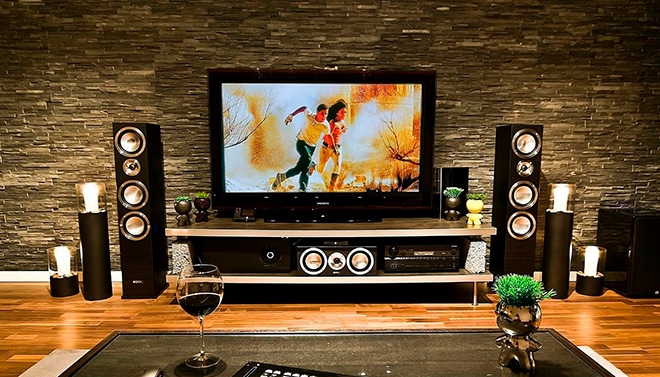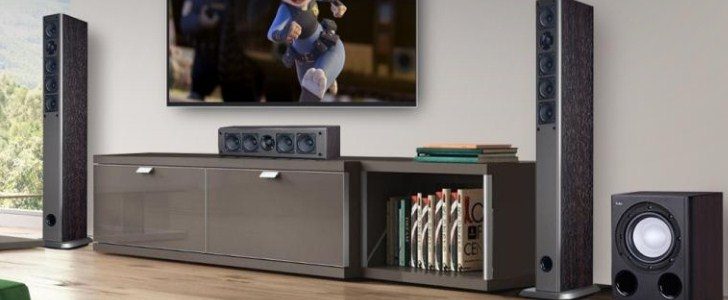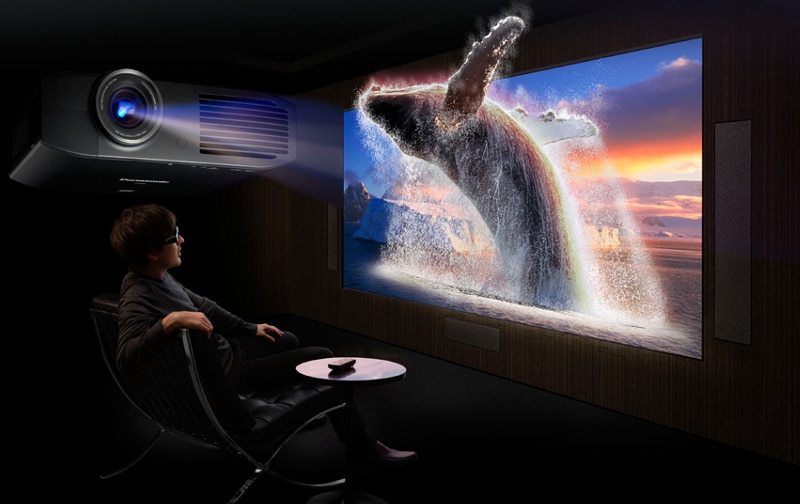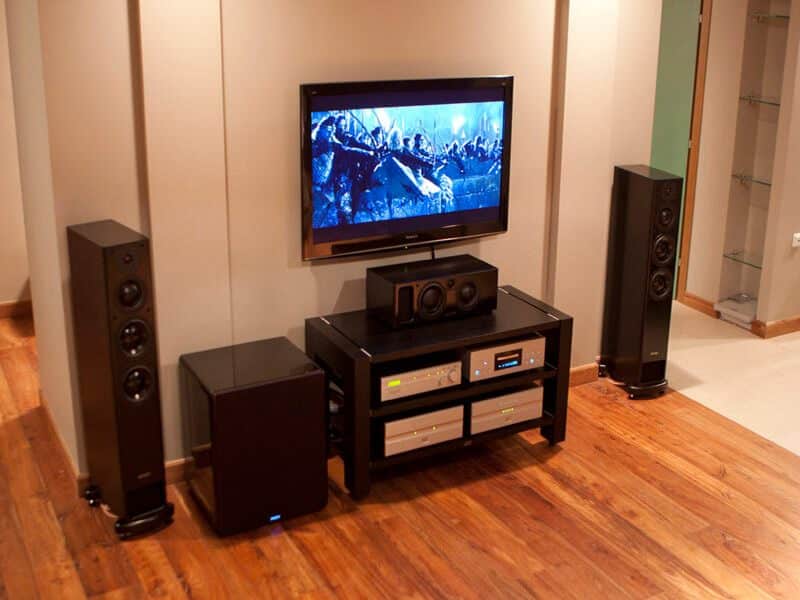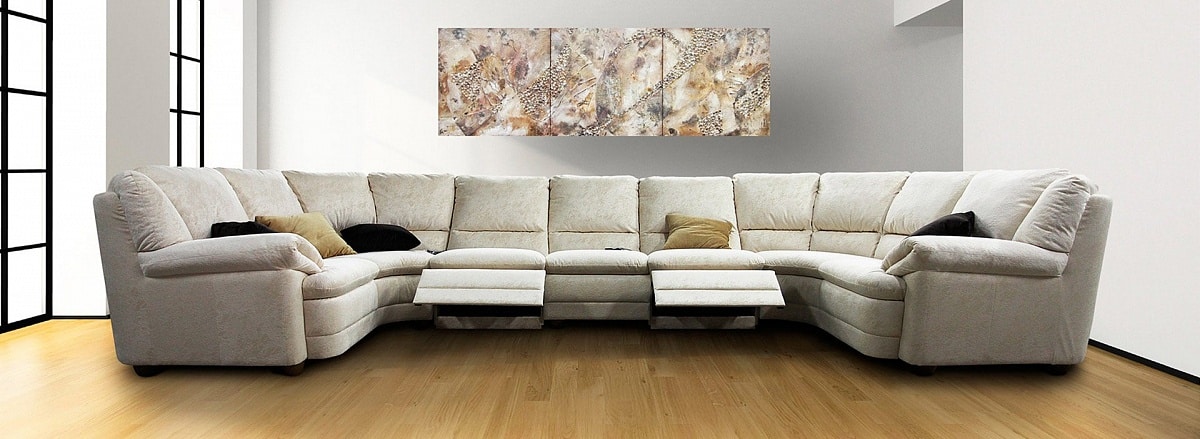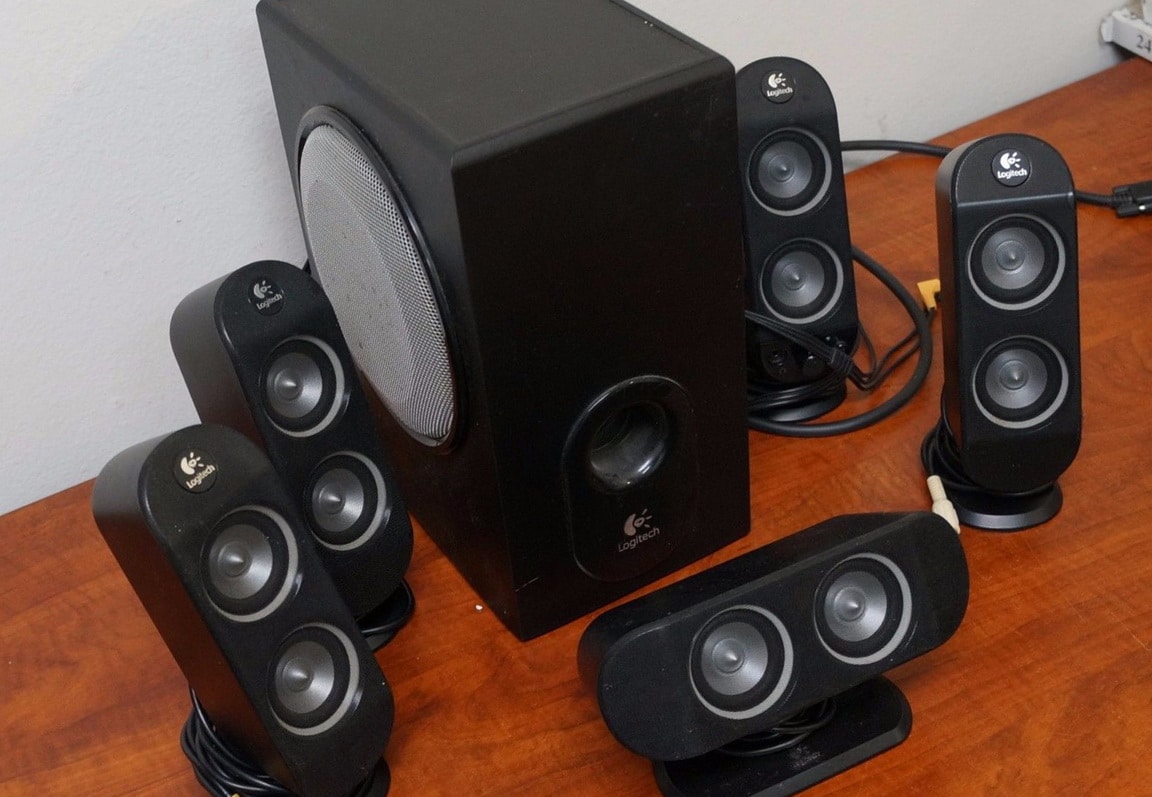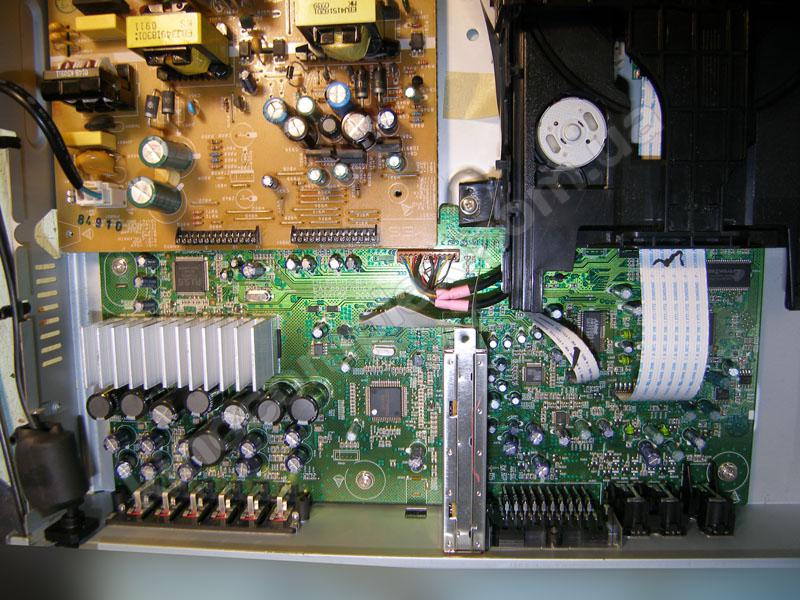A home theater includes a whole range of equipment, which consists of a speaker system, a multi-channel amplifier, a
receiver and a video / audio signal source. Typically, the kit does not include a playback device, so a TV or
projector must be purchased separately. Particular attention should be paid to the acoustic system, because it is the sound format that can give the desired depth and liveliness to the sound.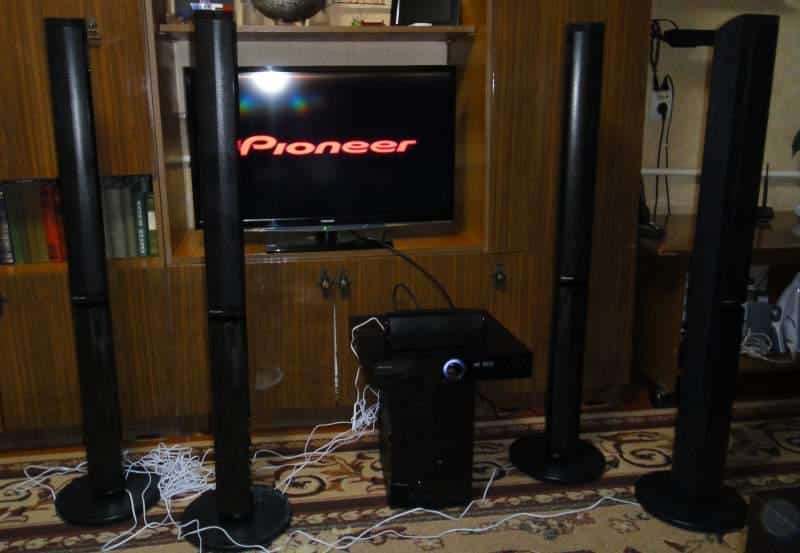
Acoustic system – home theaters 2.1, 5.1, 7.1
The sound format of acoustic systems is divided into three main types, namely: “2.1”, “5.1”, “7.1”. The first digit in the sound system means the number of speakers, and the second number of
subwoofers . A standard home theater speaker system consists of 5 speakers and 1 subwoofer, however, some manufacturers allow you to expand the sound system by purchasing more devices.
Home theater 2.1
As mentioned earlier, this system is equipped with two speakers and one subwoofer. Unlike standard TV sound, the latter is able to provide deep bass sound, and the speakers on the sides will give the sound a stereo effect.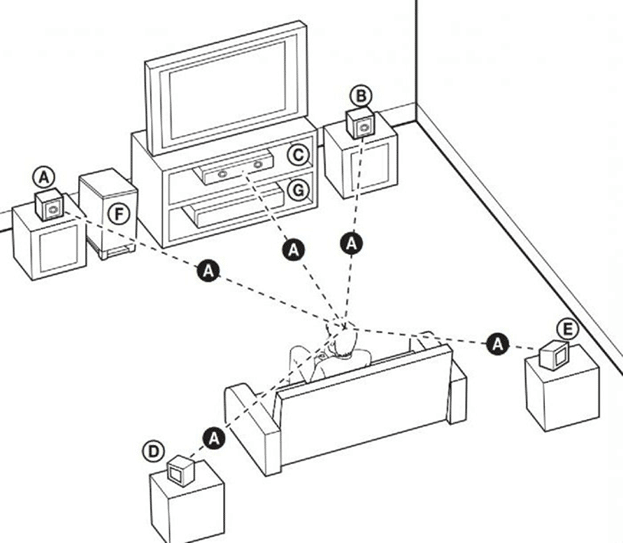
System 5.1
The 5.1 Home Theater System is a complete speaker system that delivers surround sound and the best possible movie experience. Most home theater products are based on this format, as stated in their product descriptions.
 Despite the number of variations in the placement of 5.1 speaker systems, this configuration is considered the most successful, since the viewer is in the center, to which all sound devices are directed. However, if the room is large enough, then it makes sense to experiment with the location in order to achieve the most acceptable result. It is worth noting that this audio format can be used for playback from most sources. For example, modern video players and digital television support surround sound, even desktop computer sound cards are mostly compatible with it. Home theater setup 5.1: https://youtu.be/66I0IvlsZaE
Despite the number of variations in the placement of 5.1 speaker systems, this configuration is considered the most successful, since the viewer is in the center, to which all sound devices are directed. However, if the room is large enough, then it makes sense to experiment with the location in order to achieve the most acceptable result. It is worth noting that this audio format can be used for playback from most sources. For example, modern video players and digital television support surround sound, even desktop computer sound cards are mostly compatible with it. Home theater setup 5.1: https://youtu.be/66I0IvlsZaE
Home theater system 7.1
This system differs from 5.1 format by the presence of two additional speakers, which are located between the front and rear. This eight-channel version is less popular than its predecessor, but such home theaters can be found on sale. The main advantage of this configuration is even more surround sound, as the additional two speakers form a complete circle. They are designed to create atmosphere, and usually do not reproduce the main sound. Buying a home theater is primarily a desire to immerse yourself in the thick of the events taking place on the screen. To do this, you need to choose the right speaker system, which will not only be able to accompany the picture on the screen with sound effects, but also provide decent quality. General recommendations for choosing home theaters: The main advantage of this kit is its compactness. Of course, this option cannot be considered full-fledged surround sound, since the speakers are located only in the center, but a powerful amplifier complete with a subwoofer can give a new experience from old movies and listening to music. This option fits perfectly into a small room, and at a price it is much cheaper. It is worth noting that in the future this option can be expanded by purchasing additional equipment, but on condition that the receiver allows you to connect additional speakers. A full-fledged speaker system, which, when properly placed and connected, is able to completely immerse the viewer in what is happening on the TV screen. Among the shortcomings, one can single out bulky dimensions and prices for good equipment. Of course, you can find a home theater with a 5.1 sound format in moderate dimensions, but this option will seriously affect the sound quality, since the cabinet is an important part of the speakers. Such a system is suitable for spacious rooms where there is room for large speakers. However, the larger the room, the more powerful acoustics will be required, so you should not overdo it with choosing a room. An advanced version of the previous speaker system, offering even more immersion with additional rear speakers, but requires more space. The system is suitable only for large rooms, since a significant distance between the speakers is required to achieve maximum effect. https://cxcvb.com/texnika/domashnij-kinoteatr/kakoj-vybrat.html Speaker layout 7.1. Since there are no special differences in the way of connecting speakers of different sound formats, here is an example based on 5.1 speakers. The first step is to properly arrange the speaker system. If everything is clear with the central ones, they usually differ in shape, then with the side and back everything is a little more complicated. Manufacturers mark them with literal expressions, they can be used to determine which one should be on the left and which one on the right. [caption id="attachment_6714" align="aligncenter" width="646"]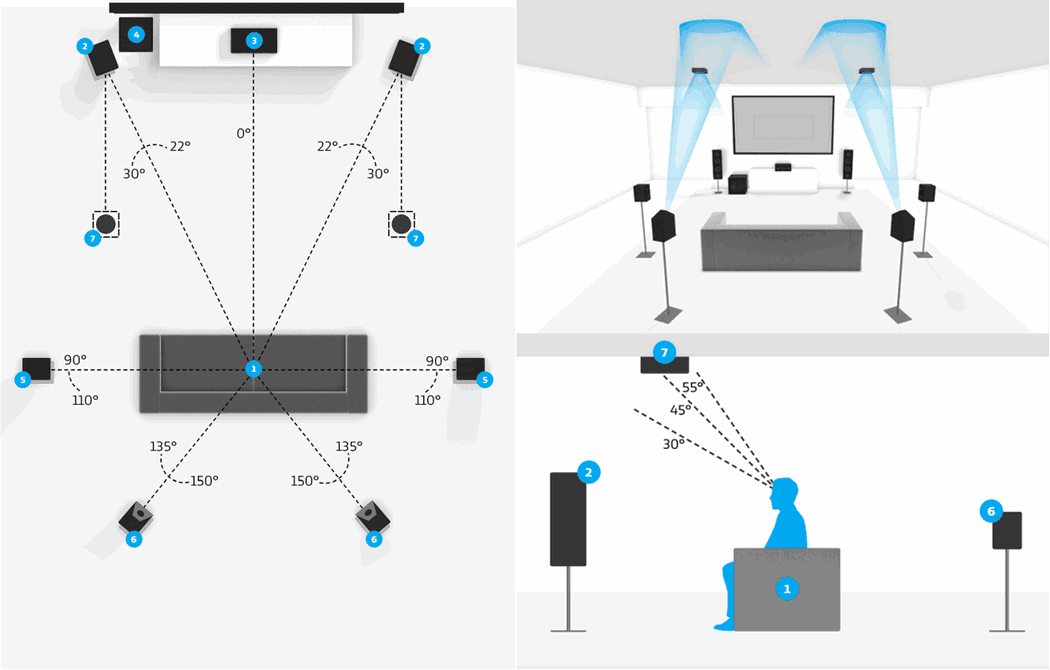
How to choose a home theater 5.1,7.1
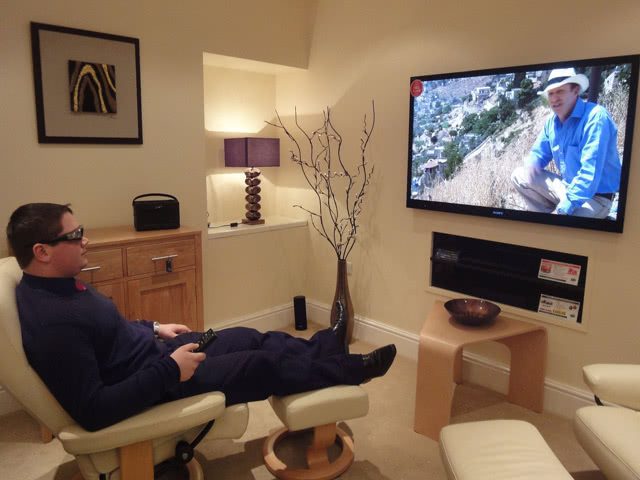
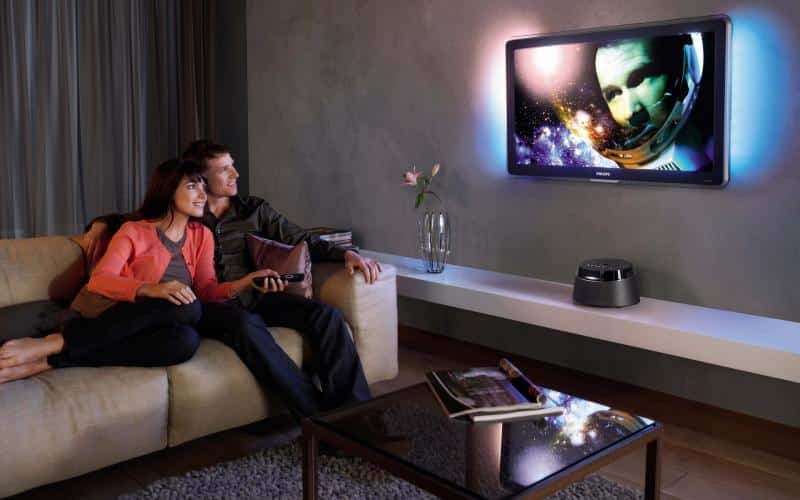 It is strongly not recommended to buy home theaters of unknown brands. Of course, the prices for such models look very attractive, but such pricing is formed due to savings on some parts of the equipment, so it is better to buy products from time-tested brands, such as
It is strongly not recommended to buy home theaters of unknown brands. Of course, the prices for such models look very attractive, but such pricing is formed due to savings on some parts of the equipment, so it is better to buy products from time-tested brands, such as
Samsung , Sven or
LG . What is 5.1, 7.1, DOLBY ATMOS, ARC, RCA, SPDIF, basic home theater audio terms: https://youtu.be/eBLJZW08l1gSet 2 speakers and 1 subwoofer
5 speakers and 1 subwoofer
7 speakers and 1 subwoofer

How to connect a speaker system
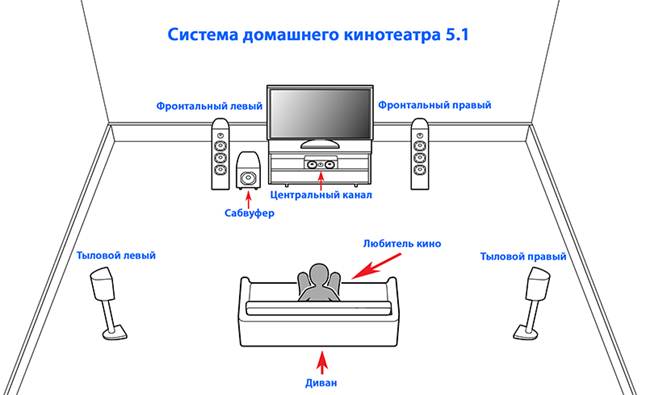 Placement of the user and home theater elements in the room [/ caption] You can immediately connect the speakers to the receiver. To do this, use the wires of the “tulip” type, the red and white wires are responsible for the sound. They must be connected to the appropriate ports on the receiver. Speakers and jacks are labeled with the same name, so just connect the jack on the receiver to the jack on the speaker. This procedure must be repeated with all speakers and subwoofer.
Placement of the user and home theater elements in the room [/ caption] You can immediately connect the speakers to the receiver. To do this, use the wires of the “tulip” type, the red and white wires are responsible for the sound. They must be connected to the appropriate ports on the receiver. Speakers and jacks are labeled with the same name, so just connect the jack on the receiver to the jack on the speaker. This procedure must be repeated with all speakers and subwoofer. Please note that the tulip cable can be replaced with mini-jack alternatives and the like. If so, then it is enough to connect the devices with one wire to each other. [caption id="attachment_7982" align="aligncenter" width="458"]
Please note that the tulip cable can be replaced with mini-jack alternatives and the like. If so, then it is enough to connect the devices with one wire to each other. [caption id="attachment_7982" align="aligncenter" width="458"]
Please note that the tulip cable can be replaced with mini-jack alternatives and the like. If so, then it is enough to connect the devices with one wire to each other. [caption id="attachment_7982">  Connection diagram [/ caption] Next, you should connect the desired video source to the receiver, for example, a television receiver or any video player. It is preferable to do this with an HDMI cable, as it is capable of transmitting audio and video signals in good quality. Connect to the “HDMI IN” jack. [caption id="attachment_7978" align="aligncenter" width="515"]
Connection diagram [/ caption] Next, you should connect the desired video source to the receiver, for example, a television receiver or any video player. It is preferable to do this with an HDMI cable, as it is capable of transmitting audio and video signals in good quality. Connect to the “HDMI IN” jack. [caption id="attachment_7978" align="aligncenter" width="515"]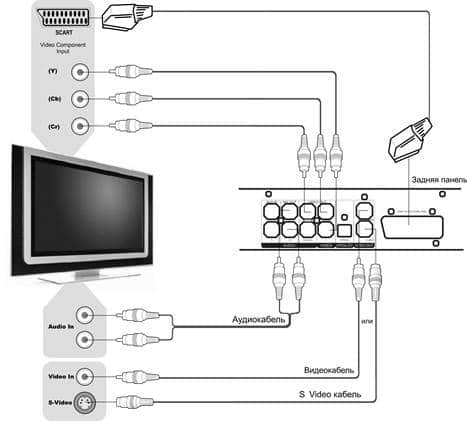 An example of connecting a home theater – instructions from the manufacturer
An example of connecting a home theater – instructions from the manufacturer
